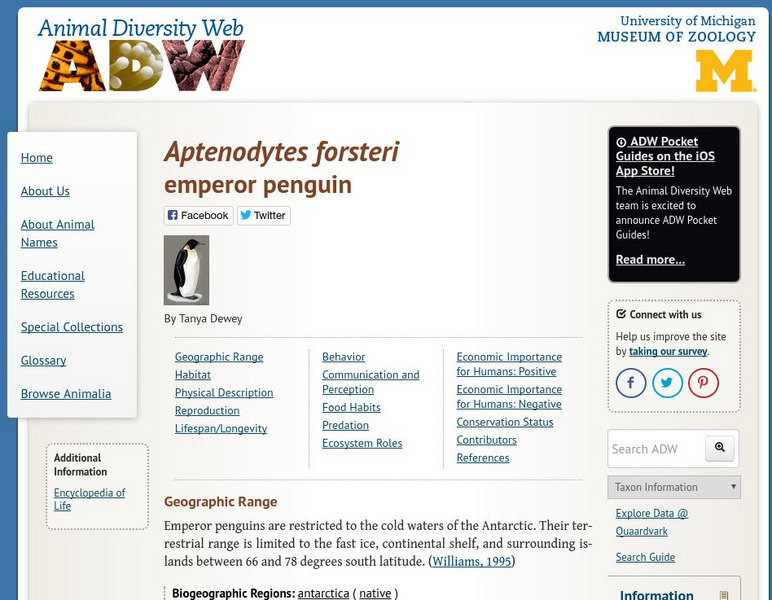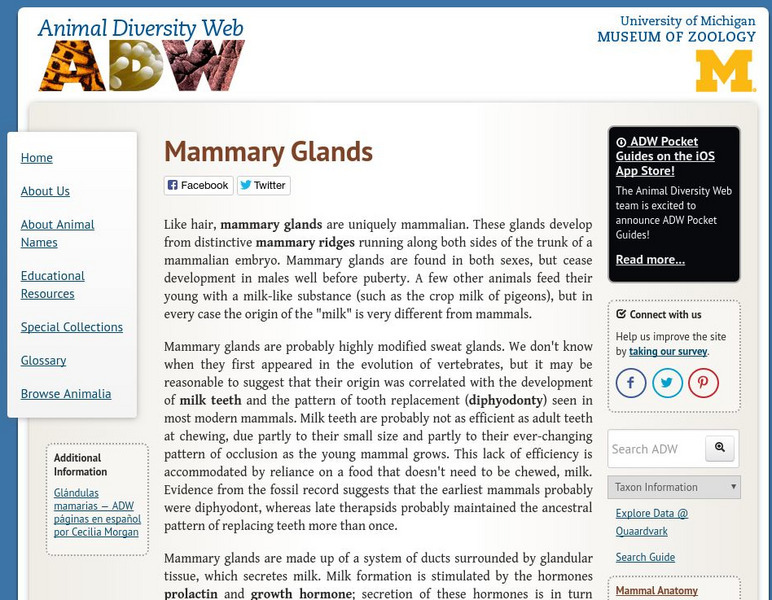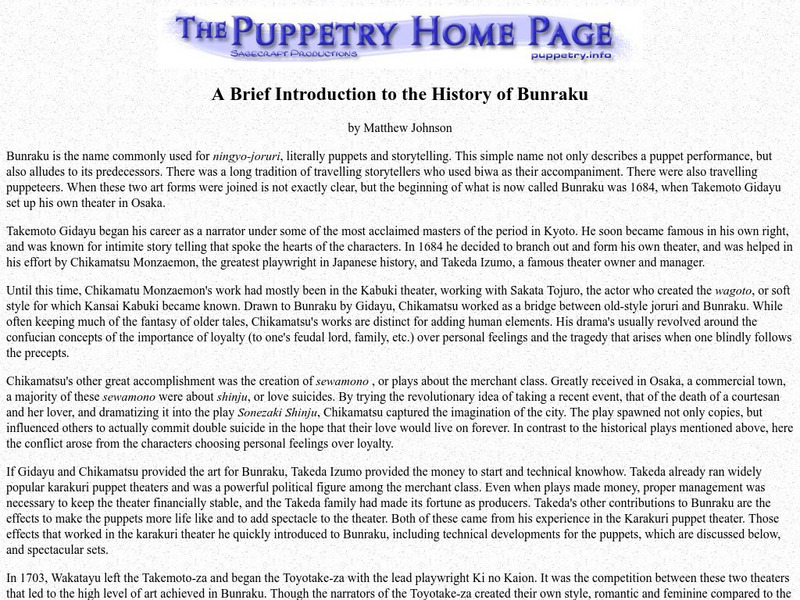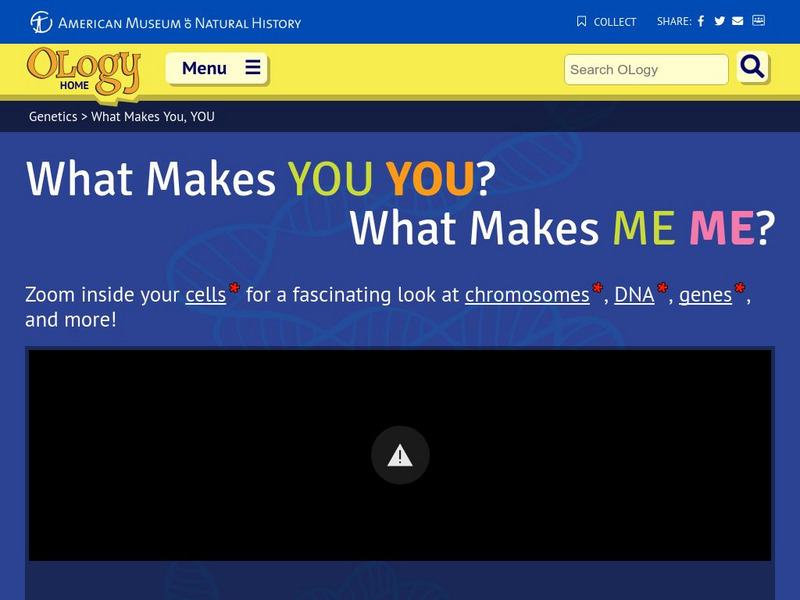BBC
Bbc News: An Animated Journey Through the Earth's Climate History
A narrated journey through the last 800,000 years of the Earth's climate, accompanied by images and graphs. A text-only version is also available. (Published 3 Dec. 2009)
Smithsonian Institution
National Museum of Natural History: Paleobiology: The Cambrian Period
Journey into the past while reading this comprehensive overview of the Cambrian Period that covers topics such as the Cambrian Explosion, Burgess Shale fauna, trilobites, fossil evidence, and climate and plate tectonics.
Smithsonian Institution
National Museum of Natural History: Zoo Labs
Five inquiry-based investigations designed for the observation of primates in a zoo setting. The labs ask guiding questions and list notable primate behaviors.
TED Talks
Ted: Ted Ed: The History of Tattoos
If you have a tattoo, you're part of a rich cultural history that dates back at least 8,000 years. Where did this practice of body modification come from, and how has its function changed over time? Addison Anderson tracks the history of...
Open Library of the Internet Archive
Open Library: Animal Heroes
This ebook version of Ernest Thompson Seton's In Elucidation Of The Same Animal Heroes: Being The Histories Of A Cat, A Dog, A Pigeon, A Lynx, Two Wolves & A Reindeer And In Elucidation of the Same Over 200 Drawings" has been made...
Smithsonian Institution
National Museum of Natural History: Hall of Mammals: Jaguar
Brief overview of the jaguar and accompanying photos demonstrate the physical adaptations that allow this animal to hunt for its prey.
Regents of the University of Michigan
Animal Diversity Web: Emperor Penguin
This site provides a detailed overview of the Emperor Penguin. Content includes a focus on this bird's physical characteristics, geographic range, natural history, economic importance for humans, and more.
Regents of the University of Michigan
Animal Diversity Web: Tarsius Pumilus
Read about the natural history and physical characteristics of tarsius pumilus, one of four species of tarsiers living in the rain forest. Provided by Animal Diversity Web.
Open Library of the Internet Archive
Open Library: The Red Book of Animal Stories
This ebook version of Andrew Lang's The Red Book Of Animal Stories has been made available in multiple formats by the Open Library. Editions of the full novel, organized by year of publication, may be accessed here.
Regents of the University of Michigan
Animal Diversity Web: Rockhopper Penguin
This site provides a detailed overview of the Rockhopper Penguin. Content includes a focus on this bird's geographic range, physical characteristics, natural history, and economic importance for humans.
Regents of the University of Michigan
Animal Diversity Web: Mammary Glands
A very solid history on the evolution of, and function of, the glands that give the group mammals their name. Good comparisons of other mammals and their function.
Stephen Byrne
History for Kids: The Ancient Greek House
History for kids teaches us about the style, architecture and materials used to make houses in ancient Greece. With animated images and writing designed to appeal to elementary age students.
Other
Dinosaur and Planetary History: Tracking Dinosaurs
An introduction to the fascinating topic of dinosaur footprints, with some excellent photos of some of the best dinosaur tracks that have ever been discovered.
Other
The Puppetry Home Page: Intro. To the History of Bunraku
The Puppetry Home Page tracks the history of Bunraku. Bunraku literally means puppets and storytelling. Learn about its predecessors and current day Bunraku.
Smithsonian Institution
National Museum of Natural History: Black and White Colobus
Brief overview of the black-and-white colobus monkey and accompanying photos demonstrate the physical adaptations that allow this animal to survive in its habitat.
Smithsonian Institution
National Museum of Natural History: Hall of Mammals: Leopard Seal
Brief overview of the leopard seal and an accompanying photo demonstrate the physical adaptations that allow this animal to eat meat.
Smithsonian Institution
National Museum of Natural History: Hall of Mammals: Caribou
Brief overview of the caribou and an accompanying photo illustrate the physical adaptations that allow this animal to migrate to find its food supply.
Smithsonian Institution
National Museum of Natural History: Hall of Mammals: Prairie Dog
Brief illustrated overview of the prairie dog and an accompanying video demonstrate the physical adaptations that allow this animal to survive in its habitat.
Smithsonian Institution
National Museum of Natural History: Hall of Mammals: Pygmy Marmoset
A brief overview of the pygmy marmoset and accompanying photos demonstrate the physical adaptations that allow this animal to eat.
Smithsonian Institution
National Museum of Natural History: Giant Squid Resurfaces
The National Museum of Natural History?s giant squid exhibit has reopened, and this website explores some of the more recent discoveries on this very elusive yet very intriguing animal.
Smithsonian Institution
National Museum of Natural History: Hall of Mammals: Sika
Brief illustrated overview of the sika deer and an accompanying video demonstrate the physical adaptations that allow this animal to eat and use its voice to attract females.
Stephen Byrne
History for Kids: Early Middle Ages
History for Kids presents information on the early Middle Ages in a kid friendly format with animated images and easy to read language. Begins with the Roman Empire moving on to teach us about the culture of monastaries, knights and...
American Museum of Natural History
American Museum of Natural History: O Logy: What Makes You You? What Makes Me Me?
Simple animation explains the function of chromosomes, genes, and DNA by letting you zoom into a cell nucleus for a closer look.
Smithsonian Institution
National Museum of Natural History: Hall of Mammals: Snowshoe Hare
A brief overview of the snowshoe hare and accompanying photos demonstrate the physical adaptations that allow this animal to survive in its habitat.














